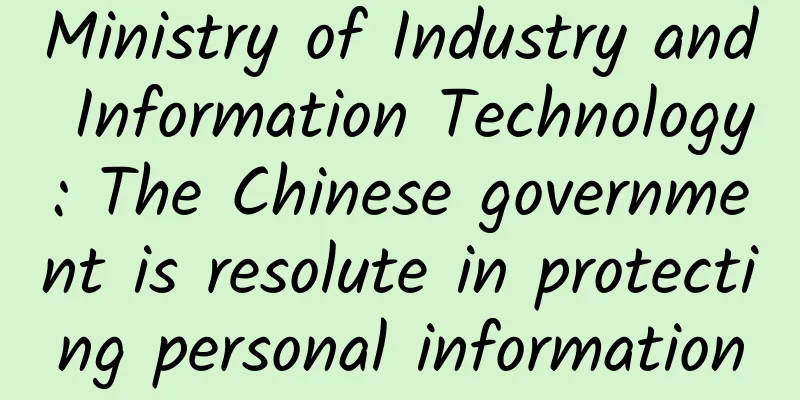How to improve the energy efficiency of communication construction?

|
In recent years, as the demand for connectivity continues to grow, communications infrastructure construction has flourished. As the world moves towards a hyper-connected future, addressing challenges related to energy efficiency in communications construction has become critical. Improving energy efficiency of communication construction using IoTToday, the Internet of Things (IoT) has become a powerful tool that can change the way we design, build, and manage communication networks. By leveraging IoT technology, energy consumption can be significantly reduced, resource allocation can be optimized, and overall industry operational efficiency can be improved. This article takes a deep dive into the various ways in which IoT can be used to improve the energy efficiency of communication construction. 1. Intelligent energy managementOne of the main benefits of IoT in communication construction is that it enables smart energy management. By deploying IoT devices and sensors, building companies can collect real-time data on energy consumption patterns and make informed decisions to optimize energy usage. This data can also be used to identify inefficiencies, track energy performance, and develop strategies to minimize energy waste, resulting in significant cost savings and environmental benefits. Key points:
2. Predictive maintenancePredictive maintenance is another area where IoT can revolutionize communications construction. By connecting key infrastructure components and equipment to IoT platforms, companies can continuously monitor their performance, detect anomalies, and predict potential failures before they occur. This proactive approach not only reduces downtime, but also significantly improves energy efficiency by preventing equipment failures or suboptimal operation. One study showed that predictive maintenance can increase energy efficiency by 30%. Key points:
3. Intelligent resource allocationIn communications construction projects, efficient resource allocation is essential to minimize costs and maximize productivity. IoT can play a key role in achieving this goal by providing real-time data on resource utilization. Using IoT-enabled devices, project managers can monitor the usage of construction materials, machinery, and labor to ensure optimal allocation. This not only reduces waste but also improves energy efficiency by eliminating unnecessary resource consumption. Key points:
4. Environmental monitoringCommunications construction projects often have a significant impact on the environment. IoT devices can be used to monitor various environmental factors during construction, such as air quality, noise levels, and water pollution. Real-time data collected through these devices can help identify potential environmental risks and take timely actions to mitigate them. In addition, monitoring environmental conditions ensures compliance with regulatory standards and promotes sustainable practices. Key points:
summaryAs the demands on communications infrastructure continue to grow, construction projects must prioritize energy efficiency. By leveraging the power of IoT, the industry can revolutionize the way we build and manage communications networks. From smart energy management to predictive maintenance, intelligent resource allocation, and environmental monitoring, IoT offers a wealth of opportunities to improve energy efficiency and drive sustainable development in the communications construction sector. Adopting IoT technology can not only achieve significant cost savings, but also enable companies to meet regulatory requirements, promote environmental responsibility, and establish leadership in the era of hyper-connectivity. As we move forward, stakeholders in the communications construction industry must embrace the IoT and seize its huge potential to shape a greener and more efficient future. Innovative strategies to reduce energy consumption in communication networksEnergy consumption challengesCommunications networks, such as cellular networks and the internet, require a lot of energy to operate efficiently. According to a study by the American Council for an Energy-Efficient Economy, communications networks account for about 3% of global electricity consumption, and that number is expected to rise. Despite the vital role these networks play in our daily lives, the impact of their energy consumption on the environment remains a concern. It is critical for network operators and manufacturers to adopt innovative strategies to reduce energy consumption without compromising network performance. Optimizing network infrastructureA key strategy for reducing energy consumption in communications networks is to optimize the network infrastructure itself. Network operators can achieve significant energy savings by implementing the following measures:
These measures not only reduce energy consumption, but also help save costs and promote sustainable practices. Smart Energy ManagementAdopting intelligent energy management technology is another key aspect to reduce energy consumption in communication networks. Using advanced technologies and algorithms, network operators can achieve the following goals:
Implementing these smart energy management technologies can not only reduce energy consumption, but also enhance network resiliency and improve overall operational efficiency. The road to a green futureReducing energy consumption in communications networks is a top priority for the industry, and innovative strategies are already paving the way towards a green future. Here are some key takeaways:
By leveraging these innovative strategies, network operators can reduce the energy consumption of communications networks and create a more sustainable, greener future for everyone. |
<<: Top 10 economic predictions for the tech industry in 2024
>>: A Brief Discussion on WebSocket Protocol-RFC 6455
Recommend
How do operators judge a reliable IoT project? The thoughts of operators’ IoT personnel
Previous article: "The Internet of Things in...
China Unicom and China Telecom refuted the rumor that the first batch of 5G users were abandoned: it is impossible to take a radical one-size-fits-all approach
In response to rumors that "the first tens o...
Exploring the evolution of Ethernet bandwidth for 5G bearer
From the voice services in the 2G era, to the ris...
What impact will satellite internet have on you when it really arrives?
Starlink, a satellite internet service that has b...
These seven points of network technology, weak current people must know
Weak current people have one thing in common: mos...
Thinking about the Boundary Expansion of Web Front-end in the 5G Era
Author: Wang Shuyan and Wang Jiarong, Unit: China...
How to implement TCP connection and communication with Python?
Network connection and communication are the know...
Tencent Cloud Spring Purchase: 2C2G4M cloud server only 40 yuan/year or 200 yuan/3 years, 4C8G10M cloud server only 211 yuan/year
Tencent Cloud launched a Spring Festival shopping...
9 killer apps for edge computing
Edge computing provides a new paradigm for runnin...
When it comes to data transmission, 5G is just the beginning
If there’s a technology that’s tailor-made for th...
Scan code payment is going to be eliminated! QR code is going to be eliminated from the stage of history
[[392156]] The launch of the digital RMB will def...
Six ways SD-WAN simplifies network management
For software-defined wide area networks (SD-WAN),...
Building the future: How ICT can help develop livable cities
With the steady acceleration of global urbanizati...
CERNET and Shengbang Security have reached a strategic cooperation, allowing colleges and universities to experience more efficient and convenient Web security governance SaaS services
[51CTO.com original article] On October 24, CERNE...
5G packages are cheaper, with the price per GB of traffic reduced to 4.4 yuan: Do you meet the requirements?
In November 2019, when 5G was officially commerci...



![[11.11] HostXen's bandwidth upgrade, recharge 100 yuan and get 20 yuan free, and add a new data center in Tokyo, Japan](/upload/images/67cabd2da9a2e.webp)





